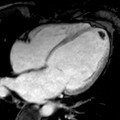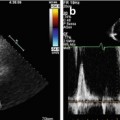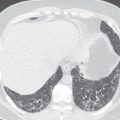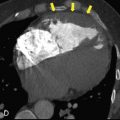Elderly residents in nursing homes often present with complex imaging findings influenced by frailty, chronic illness, and limited mobility. Age-related bone loss and muscle weakness increase the likelihood of fractures and soft-tissue injuries, some of which may conceal or resemble signs of neglect. Radiologic evaluation provides crucial evidence for understanding how and when these injuries occur.
Distinguishing accidental trauma from findings suggestive of neglect requires both technical skill and clinical awareness. Subtle differences in fracture type, distribution, or healing stage may signal inconsistencies in reported events. Recognizing these indicators is essential to ensure accurate interpretation and appropriate follow-up.
Common Injury Patterns in Nursing Home Residents
Injuries in institutionalized elderly patients are most often caused by low-energy falls. Hip fractures, distal radius fractures, and vertebral compression injuries are the typical outcomes of such events and correspond with known patterns of osteoporosis and instability.
When imaging reveals repeated trauma or injuries that do not match the stated mechanism, further analysis is warranted. Fractures at varying stages of healing, posterior rib injuries, or rotational long-bone fractures are less consistent with routine falls. Assessing symmetry, force direction, and associated soft-tissue findings helps the radiologist determine whether an injury sequence aligns with normal physiologic expectations.
Accurate descriptions of injury location, morphology, and healing progress create a reliable record that aids later clinical or administrative review.
Radiologic Clues Suggestive of Neglect or Abuse
Radiologic evaluation can uncover broader evidence of neglect beyond individual injuries. Generalized osteopenia from chronic malnutrition, extensive soft-tissue edema linked to immobility, or pressure ulcers extending to bone may all indicate poor care conditions. These findings gain significance when seen together as part of a consistent pattern.
Longitudinal comparison of studies adds further insight. Progressive weight loss, untreated fractures, or delayed callus formation across multiple imaging sessions may indicate sustained undermanagement. Correlating imaging data with laboratory values and medical records helps radiologists detect discrepancies that deserve further attention.
Insights from the RSNA article on imaging of elder abuse and forensic implications emphasize the diagnostic value of pattern recognition and objective documentation. When concerning findings appear, radiologists should follow established institutional reporting protocols to ensure that potentially preventable harm is investigated promptly and responsibly.
The Role of Imaging in Investigations of Nursing Home Injuries
Detailed imaging and consistent reporting are vital when injuries among nursing home residents are subject to internal or external review. Radiologic studies can clarify whether trauma occurred simultaneously or in separate events, helping determine whether explanations are plausible.
Comprehensive reports that include fracture age, displacement, and associated tissue injury provide clinicians with evidence to evaluate the consistency of injury accounts. When imaging raises concerns about possible neglect, radiologic documentation may be included in a formal investigation.
Radiographic evidence can also assist a nursing home injury lawyer by objectively illustrating injury patterns, timing, and severity. Maintaining clarity and neutrality ensures that radiologic findings support both accurate diagnosis and accountability when needed.
Case-Based Learning: When Imaging Tells the True Story
Clinical experience often shows how imaging resolves uncertainty in reported injury histories. Consider an elderly patient presenting with multiple fractures at different stages of healing. Although the initial explanation might involve recurrent falls, imaging may reveal posterior rib fractures or midshaft humeral breaks, which seldom result from low-energy trauma alone.
Comparing current and prior studies allows radiologists to establish a timeline of events and identify inconsistencies. Recognizing these subtle distinctions can lead to earlier intervention and improved patient safety.
A clear understanding of how frailty and disability influence injury mechanisms also refines interpretation. Reference discussions on geriatric imaging practice highlight how preexisting weakness affects trauma patterns, reminding radiologists to assess findings within each patient’s physical context.
Documentation, Reporting, and Ethical Responsibility
Objective, detailed documentation is the foundation of sound radiologic practice. Reports should describe injuries clearly and in measurable terms, focusing on observable features rather than assumptions about cause. Consistent, precise language allows others reviewing the record to form their own conclusions.
When imaging suggests possible mistreatment, radiologists must follow the reporting procedures defined by their institution or local regulations. Collaboration with referring physicians and social services ensures that concerns are handled appropriately.
Ongoing education in ethics and patient safety strengthens a radiologist’s ability to recognize subtle warning signs while maintaining professional integrity. By combining technical accuracy with ethical judgment, radiologists help safeguard some of the most vulnerable members of society.
Conclusion
Radiologic evaluation offers an invaluable view into the health and safety of elderly nursing home residents. Careful analysis of fracture distribution, progression, and healing timelines allows radiologists to distinguish expected degenerative changes from trauma patterns that raise concern.
Objectivity and precision in both imaging and reporting support quality patient care and uphold professional responsibility. Through vigilance and expertise, radiologists play a quiet but essential role in ensuring that signs of neglect are not overlooked and that every patient receives appropriate protection and treatment.
Stay updated, free articles. Join our Telegram channel

Full access? Get Clinical Tree








